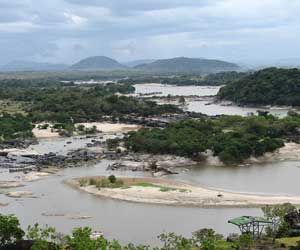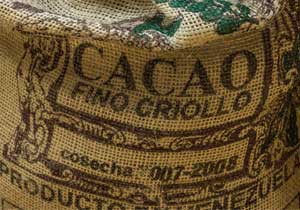Facts about the Orinoco River
Posted by Franklin Jose Navarro Pabon / in Science Facts

Orinoco River image released by GNU Free Documentation License by Anagoria
Orinoco River Facts
- The Orinoco river originates from Sierra Parima Mountains traveling all the way to the Atlantic Ocean.
- The Main tributary to the Orinoco River, is the Apure River.
- The Orinoco River flows in a giant arc shape through rainforests, flooded forests, and grasslands.
- 75% of the Orinoco River is in Venezuela and the rest is in Colombia.
- The Orinoco River is one of the largest in South America.
- The Orinoco River Basin has mineral deposits such as iron ore, chrome, bauxite, vanadium, nickel, and manganese.
- The Orinoco River is still very natural, however, nearby Mining operations, hydroelectric dams, and pollution are threatening the river.
- Also, farming and ranching have resulted in the clearings of forests and Dams on the tributaries to the river are threatening the aquatic life.
- There are two seasons in the Orinoco River basin, Winter (from November to March) and Summer (From April to November).
- The winter season has much more rain. During the winter season, the average depth of the Orinoco River can be up to 165 feet and only 49 feet during the summer.
- There are some cities along the river including Ciudad Bolivar and Ciudad Guayana, both of which have large bridges that cross the Orinoco.
- The Casiquiare is a natural canal that joins the Orinoco River and the Amazon River.
- The Orinoco River served as inspiration for one of Venezuela most famous novel "Doña Barbara", written by Romulo Gallegos.
- The Orinoco Belt (or Faja Petrolifera del Orinoco) is the World's largest certified petroleum deposit. Most of the oil is contained in heavy tar sands under the ground.
History of the Orinoco River
- The Orinoco River has sustained the traditional way of life of the Piaroa Tribe for a thousand years. The women grow food and the men fish.
- Christopher Columbus discovered the Mouth of the Orinoco River in 1498.
- Lope de Aguirre traveled through most of the river in 1560.
- In 1799 the German Naturalist Alexander Von Humbolt led an expedition to the Upper Reaches of the River.
- The local tribes along the Orinoco River call it "The Orinoquia".
- With the exception of Guajiros in the Maracaibo Lake, the rest of Venezuelan native tribes originated from the Orinoco River.
- Cacao, which is the seed used to make chocolate is found naturally in the Orinoco River valley. Historians of chocolate believe the Orinoco River valley may be the original place where cacao plants were found by people growing in the wild. Ancient tribes including Mayans and Aztecs, are thought to have been using the Theobroma cacao tree seeds to make a drink for over 3500 years.

Cacao seeds for chocolate from the Orinoco River valley
Wildlife Facts about the Orinoco River
- The Orinoco River is home to many different animal species like the giant Anaconda, river dolphins (called Toninas), giant river otters and the critically endangered Orinoco Crocodile.
- There are more than a 1000 different species of fish found on the River, like Piranhas, electric eels, and a species of catfish locals called "Laulao" that can weigh more than 200 pounds.
- Many colorful species of birds have made the Orinoco River their home, such as parrots, flamingos, and scarlet ibis.
- The Orinoco Crocodile is the largest predator in South America. An Orinoco Crocodile can eat a Shark. Orinoco Crocodiles are extremely rare due to hunting.
